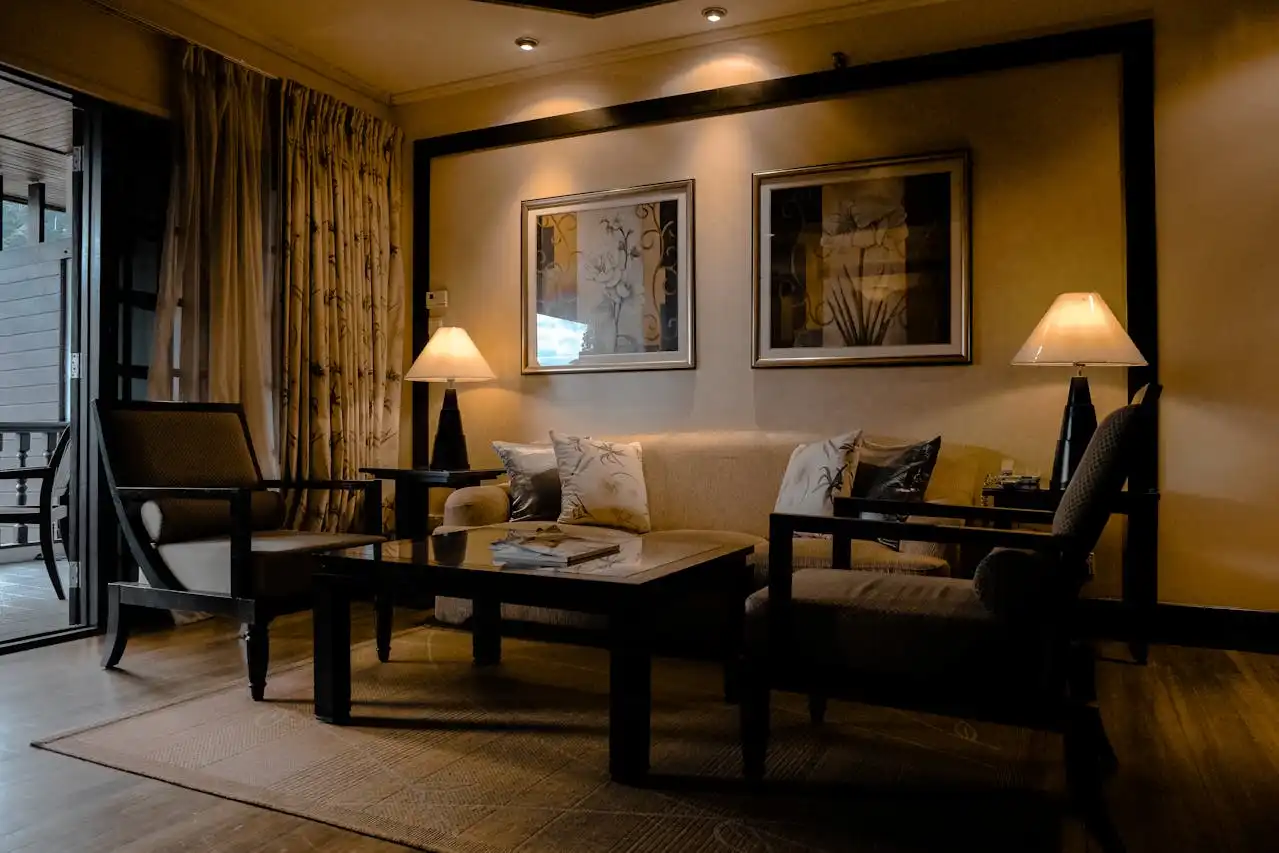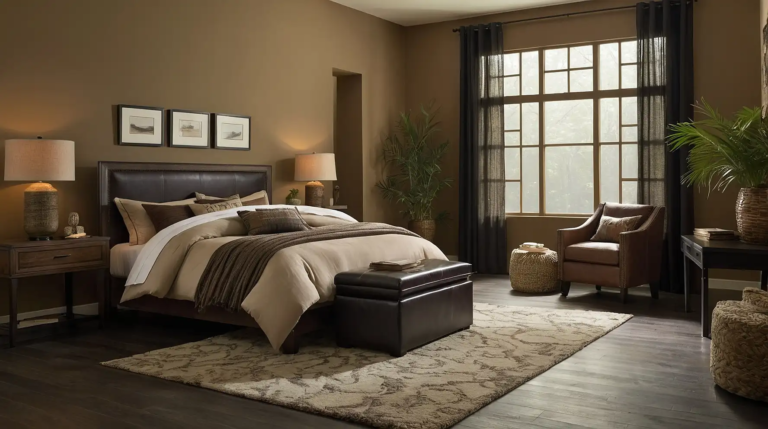Mood Lighting Tips That Completely Change Your Room’s Vibe
You flip a switch and suddenly your space transforms from ordinary to extraordinary. Master these mood lighting techniques to revolutionize any room.
The right lighting doesn’t just illuminate your room – it creates atmosphere, influences emotions, and completely changes how you experience your space.
Layer Your Lighting Like a Pro
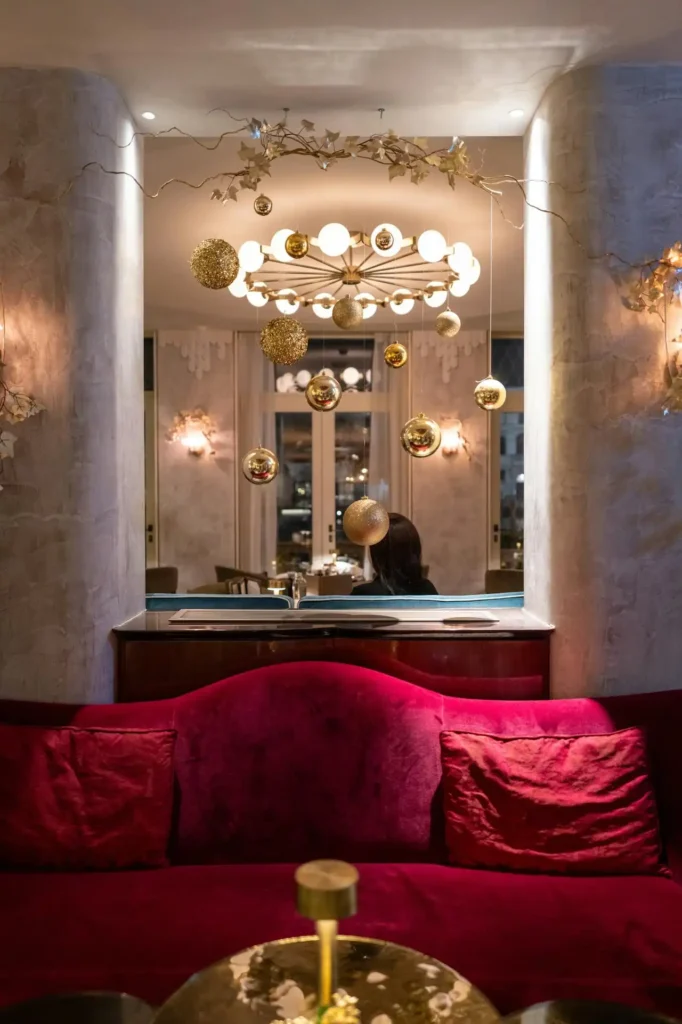
You need three distinct types of lighting working together to create the perfect ambiance: ambient, task, and accent lighting.
Ambient lighting provides overall illumination for your room, task lighting helps you perform specific activities, and accent lighting highlights architectural features or creates visual interest.
When you combine all three layers thoughtfully, you create depth and flexibility that single lighting sources simply cannot achieve.
Start with ambient lighting as your foundation, but avoid relying solely on harsh overhead fixtures.
Instead, use multiple soft light sources distributed throughout your room to create even, comfortable illumination.
Table lamps, floor lamps, and wall sconces provide much more flattering ambient light than stark ceiling fixtures that cast unflattering shadows and create a sterile atmosphere.
Add task lighting wherever you perform specific activities like reading, cooking, or working.
This focused illumination should be bright enough for functionality but positioned to avoid glare or harsh shadows on your work surface.
Adjustable desk lamps, under-cabinet lighting, and reading lights give you control over exactly where you need brighter illumination.
Accent lighting adds the magic that transforms ordinary spaces into something special. Use this layer to highlight artwork, architectural details, plants, or decorative objects that deserve attention.
Picture lights, track lighting, and strategically placed spotlights draw the eye to your room’s best features while creating visual depth and interest.
Master the Magic of Warm Light Temperatures
You can instantly make any space feel more welcoming and cozy by choosing warm light temperatures between 2700K and 3000K.
These golden, amber tones mimic candlelight and sunset, triggering psychological responses that help you feel relaxed and comfortable.
Cool light temperatures above 4000K create alertness and energy but can feel harsh and unwelcoming in living spaces.
Warm lighting makes skin tones appear healthier and more attractive while creating the intimate atmosphere perfect for entertaining or relaxing.
This explains why restaurants and hotels invest heavily in warm lighting – it makes everyone look and feel better.
You can achieve the same effect in your home by replacing cool bulbs with warm alternatives.
Different rooms benefit from different approaches to color temperature. Bedrooms and living rooms almost always look better with warm lighting that promotes relaxation and comfort.
Kitchens can handle slightly cooler temperatures for food preparation areas, but dining spaces should remain warm and inviting for meals and conversation.
Consider using smart bulbs that allow you to adjust color temperature throughout the day.
Start with cooler, energizing light in the morning, transition to neutral tones during the day, and end with warm, relaxing light in the evening.
This progression supports your natural circadian rhythms while providing appropriate lighting for different activities and moods.
Ditch the Overhead Lighting Dependency
You create much more flattering and interesting lighting by turning off overhead fixtures and relying on lamps positioned at various heights throughout your room.
Overhead lighting casts harsh shadows under eyes, noses, and chins while creating a flat, one-dimensional appearance that makes even beautiful rooms feel sterile and unwelcoming.
Table lamps and floor lamps positioned around your room’s perimeter create pools of warm light that feel inviting and intimate.
This approach mimics natural lighting patterns and creates the kind of atmosphere that makes people want to stay and enjoy your space.
Position lamps at different heights to create visual rhythm and ensure even light distribution.
Use multiple lower-wattage bulbs instead of fewer high-wattage sources to achieve better light distribution.
Several 40-60 watt bulbs create more even, flattering illumination than one bright 150-watt bulb.
This approach also gives you more flexibility to adjust the mood by turning different lamps on or off as needed.
If you must use overhead lighting, install dimmer switches that allow you to control intensity.
Dimmed overhead lights can provide gentle ambient lighting when combined with other sources, but avoid using them at full brightness except when you need maximum illumination for cleaning or detailed tasks.
Create Drama with Strategic Accent Lighting
You can transform ordinary architectural features into stunning focal points through carefully placed accent lighting that highlights texture, color, and form.
Up-lighting behind plants creates beautiful silhouettes against walls while adding natural elements to your lighting scheme.
Wall-washing techniques use indirect light to emphasize textured surfaces like stone, brick, or decorative wallpaper.
LED strip lights hidden behind crown molding, under cabinets, or along baseboards create sophisticated indirect lighting that adds architectural interest without visible fixtures.
This technique works particularly well in modern spaces where you want clean lines and minimal visual clutter. Choose warm white LEDs and install dimmer controls for maximum flexibility.
Picture lights and track lighting allow you to highlight artwork, photographs, or collections while creating gallery-like sophistication.
Position these lights to minimize glare and shadows while ensuring even illumination across your displayed pieces.
Adjustable fixtures give you the flexibility to redirect light when you rearrange or replace artwork.
Architectural lighting can emphasize your room’s best structural features like exposed beams, alcoves, or built-in shelving.
Use narrow-beam spotlights to create dramatic shadows and highlights that add depth and visual interest to otherwise plain surfaces.
This technique works especially well in rooms with interesting architectural details that deserve attention.
Harness the Power of Candles and Fire
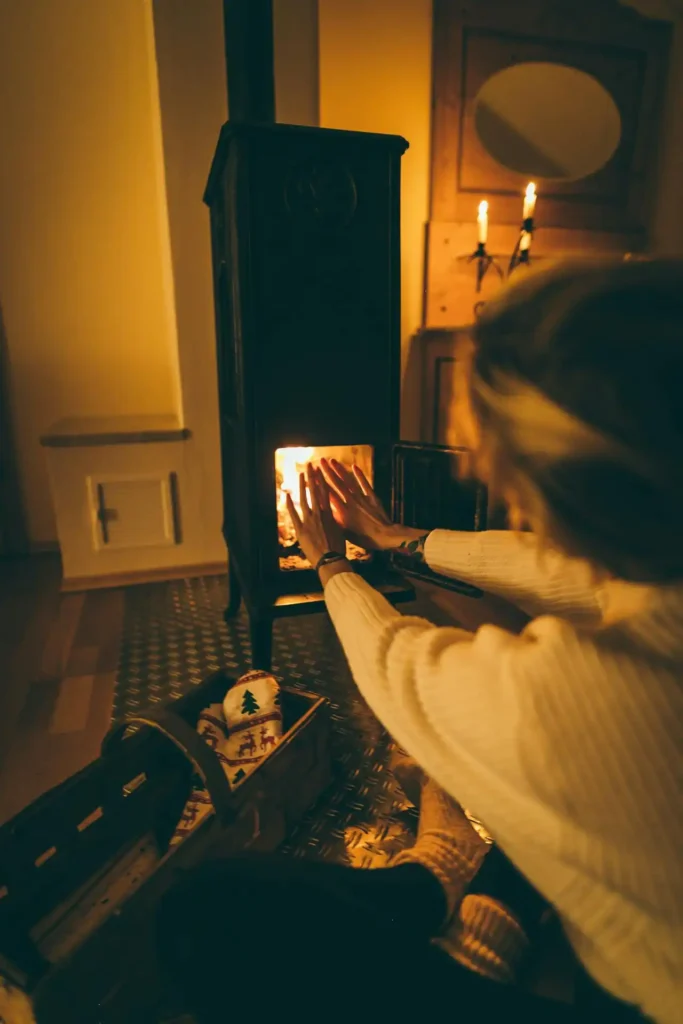
You instantly create romance and warmth by incorporating real flames through candles, fireplaces, or lanterns. Fire provides the ultimate warm light source that no electric bulb can truly replicate.
The flickering, dancing quality of flame creates movement and life that adds energy to your space while promoting relaxation and contemplation.
Group candles of varying heights on coffee tables, mantels, or dining tables to create stunning focal points that provide both illumination and decoration.
Use unscented candles in living and dining areas to avoid competing with food aromas, but feel free to use fragranced options in bedrooms and bathrooms where scent enhances the mood.
Battery-operated candles provide the visual appeal of real flames without safety concerns or maintenance requirements.
High-quality LED candles now feature realistic flickering effects that closely mimic real fire.
Use these alternatives in areas where real candles aren’t practical, such as children’s rooms or spaces with fabrics and papers nearby.
If you have a fireplace, make it the centerpiece of your evening lighting scheme.
The warm, golden light from a fire creates the ultimate cozy atmosphere while providing enough illumination for conversation and relaxation.
Even gas fireplaces offer this warming effect, though wood-burning fires provide the most authentic experience.
Use String Lights for Magical Ambiance
You can add enchanting sparkle to any space with strategically placed string lights that create a magical, fairy-tale atmosphere.
These versatile lighting elements work in every room and decorating style, from bohemian bedrooms to modern living rooms.
Choose warm white LEDs for the most flattering and versatile lighting effects. Battery-operated options eliminate the need for nearby electrical outlets.
Drape string lights along headboards, around windows, or across ceilings to create soft, romantic illumination perfect for relaxing or entertaining.
The tiny points of light add sparkle without overwhelming brightness, making them ideal for creating cozy reading nooks or intimate conversation areas.
Mason jar lights, fairy light curtains, and light-up branches bring string lighting into more sophisticated decorating schemes.
These creative applications provide the magical quality of string lights while looking intentional and polished rather than temporary or juvenile.
Choose fixtures that complement your existing décor style and color palette.
Outdoor string lights can extend your living space into patios, decks, and gardens while creating seamless indoor-outdoor flow.
Weatherproof LED strings withstand the elements while providing years of reliable service.
Create overhead canopies of light or outline architectural features to define outdoor entertaining areas.
Control Your Lighting with Dimmers and Smart Switches
You gain incredible flexibility and mood control by installing dimmer switches that allow you to adjust lighting intensity for different activities and times of day.
Dimmed lights create intimacy for entertaining, while brighter settings support tasks like cleaning or reading. This simple upgrade transforms how you use and enjoy your space.
Smart lighting systems take control to the next level by allowing you to program different lighting scenes for various activities and moods.
Create “dinner party” settings with warm, dimmed lights, “movie night” configurations with minimal lighting, or “morning energy” scenes with brighter, cooler tones.
These programmable options make it easy to achieve perfect lighting with the touch of a button.
Smart bulbs that connect to your smartphone or voice assistant provide ultimate convenience and customization.
You can adjust brightness, color temperature, and even create color-changing effects without rewiring or installing new fixtures.
Schedule lights to gradually dim in the evening or brighten in the morning to support healthy sleep patterns.
Group lighting controls allow you to manage multiple fixtures simultaneously while maintaining individual control when needed.
Wire related lights together so you can create cohesive lighting scenes throughout open floor plans or connected rooms.
This coordination ensures your lighting feels intentional and sophisticated rather than random and disjointed.
Position Lamps for Maximum Impact
You achieve the most flattering and functional lighting by positioning lamps at eye level when seated, which typically means 58-64 inches from the floor to the bottom of the lampshade.
This height provides excellent task lighting for reading while casting flattering light on faces during conversation.
Avoid placing lamps too high or too low, as this creates glare or inadequate illumination.
Create triangular lighting arrangements by positioning three light sources at different points around your seating area.
This technique ensures even illumination while eliminating harsh shadows and dark corners.
Use table lamps, floor lamps, and wall sconces to create these triangular patterns that provide comprehensive room lighting.
Place lamps in corners to bounce light off two walls simultaneously, creating soft, even illumination that makes rooms feel larger and more welcoming.
Corner placement also keeps lamp cords out of traffic areas while maximizing the effective reach of each light source.
Choose lamps with wide-spreading shades to maximize this wall-washing effect. Consider the lamp’s relationship to furniture and activities when determining placement.
Reading lamps should sit slightly behind and to the side of your shoulder to avoid casting shadows on your book or tablet.
Task lamps need positioning that illuminates work surfaces without creating glare on computer screens or reflective surfaces.
Embrace Natural Light as Your Foundation
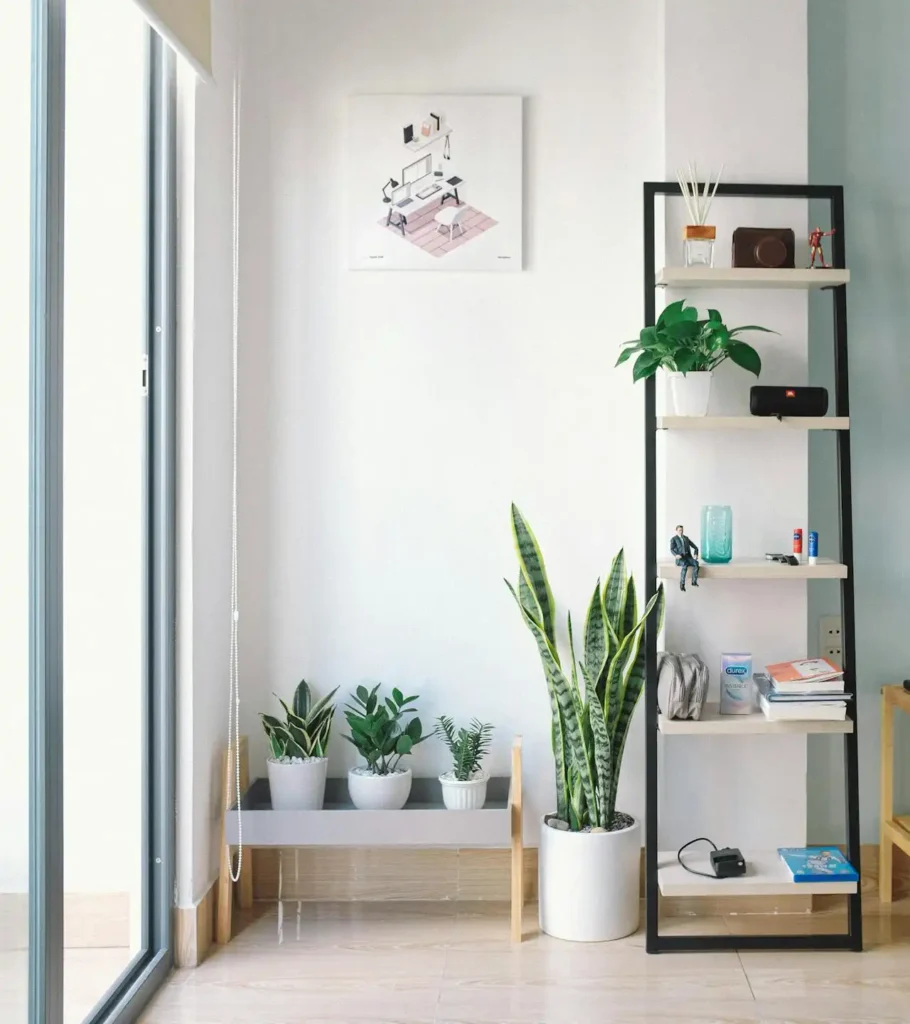
You should treat natural light as the foundation of your lighting scheme and plan artificial lighting to complement rather than compete with daylight.
Understanding how natural light changes throughout the day helps you position furniture and plan supplemental lighting that works harmoniously with your room’s existing illumination patterns.
Maximize existing natural light by keeping window treatments minimal during the day and choosing light colors for walls and ceilings that reflect rather than absorb available daylight.
Mirrors positioned across from windows double the apparent natural light while making rooms feel larger and brighter. This technique costs nothing but provides dramatic results.
Plan your artificial lighting to transition smoothly from day to evening, gradually taking over as natural light fades.
Start with minimal artificial lighting during daylight hours, add ambient lighting as afternoon progresses, and create full evening lighting scenes after sunset.
This progression feels natural and supports your body’s circadian rhythms. Flexible lighting systems adapt to these changing needs throughout the year.
Consider how seasonal changes affect your natural light availability and adjust your artificial lighting accordingly.
Winter months require more aggressive artificial lighting strategies, while summer evenings might need only minimal supplemental illumination.
Conclusion
Transform any space from ordinary to extraordinary using these strategic lighting techniques.
Perfect mood lighting creates atmosphere that enhances every moment spent in your home.

